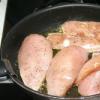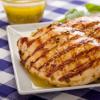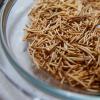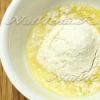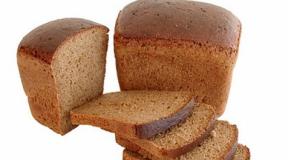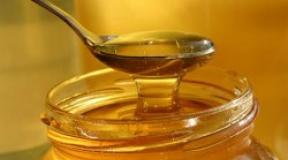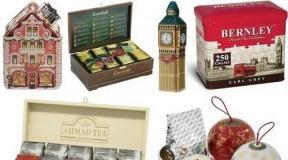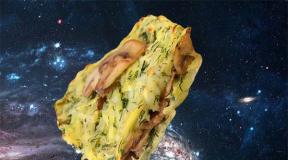How to spot fake JackDaniel's whiskey. How to distinguish a fake "Jack Daniels" from the original whiskey
Counterfeit and counterfeit whiskey has not noticeably entered the consumer market and is quietly pushing all lovers of “sivukha”. What you need to know before buying whiskey to protect yourself:
1. Place of sale/purchase and price
Real whiskey, especially if it has the inscriptions “Deluxe” or “Premium” on its label (this is how elite varieties are designated), should be bought only in specialized stores selling alcoholic products. I advise you to ask the seller to show you a certificate of quality. The store is obliged to show this document at the first request of the buyer.
Another advantage of specialized alcohol stores is that you can use the services of consultants there. They will select whiskey that will satisfy your requirements for quality and price.
If your city does not have separate shops selling liquor, then it would be correct to buy whiskey in large supermarkets, but not in kiosks. Experts advise you to choose one store whose product quality suits you, and always buy alcohol only there.
It will not be superfluous to pay attention to the cost of sold whiskey. If in one store the whiskey of the chosen brand is several times cheaper than in others, then this is a clear sign of a fake.
2. The appearance of the bottle and packaging
Usually counterfeit manufacturers rely on the inexperience of the buyer and the low price, so they save on the bottle.
A sign of fake whiskey is an incorrectly pasted or poor quality label. If you have decided on the brand of whiskey you are purchasing, then even before buying on the manufacturer's website, you can see what the bottle looks like and what protection it has.
The absence of an excise stamp should immediately alert. This may indicate that the whiskey was brought into the country illegally or is simply a fake. In any case, you should not buy it, because no one guarantees the quality of the drink.
3. The color of the drink
High-quality whiskey must be transparent, this indicates the purity of the water from which the drink is made, and the full observance of production technology. The color of whiskey ranges from light yellow to brown, but in any case, the drink should not be cloudy and contain sediment.
4. Shaking
You can distinguish whiskey from a fake using one simple method: shake the bottle well and look at the bubbles. They should last a long time and be large. In high-quality whiskey, drops after shaking slowly flow down the glass of the bottle, in fake whiskey - very quickly.
5. Smell and taste
Whiskey should have a light oaky or malty aroma and not stink of alcohol. A quality drink leaves a long aftertaste.
Overview of brand differences:
Whiskey Jim Beam
To distinguish fake Jim Beam whiskey before the purchase, you need to carefully inspect the bottle.
photo - fake whiskey jim beam
Particular attention should be paid to the following signs:
- Lid. Real American Jim Beam bourbon has no ribs on the top of the lid - it is smooth;
- The bottom of the lid. The original whiskey has two stripes of golden color, above the image of the trademark "Jim Beam";
- Bottleneck. The genuine Jim Beam has facets only on the lower half of the neck, while the fake has a faceted neck along the entire length;
- Bottle shoulders. Real whiskey has an embossed inscription "Jim Beam" on the shoulders of the bottle on four sides.
Johnnie Walker Black Label, Red Label
One of the most counterfeited whiskeys is Johnnie Walker Black Label, which, however, can be explained by the popularity of the original drink. Due to the variety of fakes, the description will be immediately in the picture.

In order to distinguish a fake, you need to pay attention to the following signs:
1. Cover.
2. Embossing on the label
Jameson
In order to distinguish a fake, you should pay attention to the following signs:

photo - differences fake Jameson
1. Plastic shell on the lid - the original Jameson has a metal lid without any shell;
2. The lack of embossed inscriptions on the bottle - real whiskey has two embossed inscriptions: "Product of Ireland" - at the bottom of the front side of the bottle, and "John Jameson" - at the bottom of the back side.
3. The 0.7 liter capacity is the most commonly counterfeited Jameson capacity. If you have any doubts about the quality of the drink, it is better to refuse to buy whiskey in a bottle of this volume. Buy a liter!
Jack Daniel's
There are several signs of a fake:

1. Metal lid - original Jack Daniel's only comes with a plastic lid covered with a plastic shell;
2. Round "shoulders" of the bottle - since 2011, bottles have been produced in a new design;
3. Smooth "shoulders" - on the "shoulders" of the bottle on four sides there should be an embossed inscription "Jack Daniel's";
4. "Curved" label - the label must be glued evenly, and the order of the inscriptions on it must correspond to the established pattern.
5. Absence of the "Registered trade-mark" ® on the bottle neck shell. It must be present on the original whiskey;
6. Smooth bottle neck. In a genuine drink, the neck of the bottle has edges along its entire length.
Elite whiskey of the famous Scottish brand Chivas Brothers is well known all over the world. Each year, the manufacturer supplies more than 4 million cases of this exquisite drink to more than 200 countries on different continents. The quality of the adhesive tape is evidenced by the fact that the company is one of the suppliers of the British Royal Court.
Like any product of the highest quality, which is in steady demand, Chivas whiskey ("Chivas") is often falsified, offering imitation of different levels. What to look for when buying, so as not to become a victim of scammers? The original Chivas Regal whiskey has unique properties that distinguish it from fakes.
Decoration in a gift box
Each bottle of "Chivas" is produced by the manufacturer in an individual gift box - cardboard, metal or leather. The exception is the Chivas Regal flask. If you are offered a bottle without packaging from an ordinary box, this is an undeniable fake.
Original packaging
It is easy to recognize a round-shaped bottle with characteristic smooth shoulders and a raised logo above the label. On the opposite side of the bottle, there are necessarily embossed signatures of the founders of the brand - brothers John and James Chivas. The bottom glass is about 15 mm thick, with Latin inscriptions and brand engraving. The relief is clear, the letters are of the same height, with even edges. The absence of these elements, as well as the presence of those that are not characteristic, indicates that you are being offered a dubious drink from among the many fakes of Chivas Regal.

Label
The embossed label of the original drink must be pasted neatly and evenly. She has an ideal print quality, bright colors, clear borders of the transition of colors and relief. The label has a number indicating the exposure time. On the reverse side of the front label, a unique serial number is visible through the glass, as well as the number and date of the spill. If Chivas Regal whiskey does not have such inscriptions on the back of the label, then it is a fake.
On the small label, the unique number and date of bottling can also be on the front side. If possible, compare the unique serial numbers on different bottles, they should not match.

Cork
The Chivas cork is perfectly sealed with a plastic film with inscriptions in English and the brand logo. On a tightly fitting film, there should be no creases or folds. The logo and inscriptions are also printed on the lid.

Excise stamp
An excise stamp on a bottle of true scotch must be required. The exception is whiskey purchased at a duty free duty free shop. Look carefully at the brand: the volume indicated on it must correspond to the volume of glass containers.
You can check the authenticity of the excise stamp right in the store - a special kind of scanner that allows you to do this is available in every hypermarket and specialized alcohol boutique. Contact the store administrator with a request to check the brand, and if the scanner shows a discrepancy, refrain from buying.
Visual assessment of the quality of Chivas Regal
Here are a few features to look out for:
- transparency of the drink;
- color;
- consistency.

Transparency is considered one of the main indicators of the authenticity of whiskey. Insufficient filtration, the sign of which is turbidity, is the most obvious attribute of counterfeit. Leave a fingerprint on one side of the bottle and try to see it from the opposite side. If it is indeed "Chivas Regal", the imprint should be clearly visible.
Carefully examine the bottom - there can be no sediment and flakes. The original drink has an amber color, it is absolutely clean and transparent. Shake the bottle vigorously and check that the degree of transparency has not changed.
After shaking, the original Chivas Regal whiskey forms stable large bubbles and slowly flows down the inner wall of the glass in large drops.

Price
Everything is simple here: a real elite whiskey is not cheap, the minimum price of Chivas Regal 12 with a volume of 0.5 liters cannot be less than 30-35 euros per bottle. The same adhesive tape with a capacity of 0.75 liters will cost at least 35-40 euros, and for Chivas Regal 18 0.75 liters you will have to pay from 70-75 euros.
Where to buy?
We recommend purchasing expensive alcohol only in specialized stores or large shopping centers. As a rule, such dealers, valuing their reputation, do not trade in surrogates. When buying elite alcohol, it will not be superfluous to inquire about documents that guarantee quality. If such a request meets with dissatisfaction or refusal of the seller, refrain from buying.
Along with the growth in the consumption of good, high-quality imported alcohol, the amount of counterfeit produced is also growing. Let's make a reservation right away, as a rule, a fake does not contain any poison, on the contrary, there is a completely normal alcoholic drink, but still very different in taste and recipe from the real one. When using a counterfeit, you need to be afraid, mainly, of allergic reactions that can be triggered by various impurities and chemical additives. However, to date, we do not know of a single case of poisoning with such alcohol. The largest counterfeit production is concentrated in the Moscow and Voronezh regions, as well as in the North Caucasus. Wholesalers do not particularly hide the origin of the goods, and, as a rule, act openly. However, in retail sales, sellers may hide the fact that products are counterfeit. Usually the terms "confiscation" and "Duty Free" serve as a cover. Here it should be emphasized that, according to the law, the confiscated property has the right to sell only the Russian Federal Property Fund, and there are serious restrictions on the volume (displacement) for the purchase of goods in Duty Free. In some cases, it is possible to distinguish a fake only after the bottle has been opened and the drink has been tried. It is especially unpleasant if alcohol was presented as a gift to a loved one. Therefore, we decided to publish some signs that will make it possible to distinguish a fake even at the stage of purchase, before the transfer of money. We will try to expand this list
Jack Daniel's
Of course, it is best to recognize a fake even before opening the bottle, at the stage of purchase. There are several signs of a fake: 1. Metal lid - original Jack Daniel's comes only with a plastic lid covered with a plastic shell; 2. Round "shoulders" of the bottle - since 2011, bottles have been produced in a new design; 3. Smooth "shoulders" - on the "shoulders" of the bottle on four sides there should be an embossed inscription "Jack Daniel's"; 4. "Curved" label - the label must be glued evenly, and the order of the inscriptions on it must correspond to the established pattern. For clarity, here is an image of a “bottle of Jack Daniel’s” bought in Rostov not so long ago: Recently, counterfeit Jack Daniel's in new bottles has become widespread. At first glance, a fake is indistinguishable from the original, but still there are several signs: 1. The absence of the “Registered trade-mark” ® badge on the bottle neck shell. It must be present on the original whiskey; 2. Smooth bottle neck. In a genuine drink, the neck of the bottle has edges along its entire length.
Recently, counterfeit Jack Daniel's in new bottles has become widespread. At first glance, a fake is indistinguishable from the original, but still there are several signs: 1. The absence of the “Registered trade-mark” ® badge on the bottle neck shell. It must be present on the original whiskey; 2. Smooth bottle neck. In a genuine drink, the neck of the bottle has edges along its entire length. 
Tequila Olmeca
In order to identify a fake even at the stage of purchase, you should remember the following signs: 1. The presence of ribs in the upper part of the lid - the original tequila has a lid with a smooth top; 2. Smooth bottle - there should be corrugation on the bottle, it is especially noticeable on the "shoulders" of the bottle; glass does not have to be smooth. For clarity, here is an image of a fake bottle of Olmeca Gold, specially purchased by us in Rostov:
Jameson Whiskey
In order to distinguish a fake, you should pay attention to the following signs: 1. Plastic shell on the lid - the original Jameson has a metal lid without any shell; 2. Lack of embossed inscriptions on the bottle - real whiskey has two embossed inscriptions: "Product of Ireland" - at the bottom of the front side of the bottle, and "John Jameson" - at the bottom of the back side. 3. The 0.7 liter capacity is the most commonly counterfeited Jameson capacity. If you have any doubts about the quality of the drink, we suggest that you refuse to buy whiskey in a bottle of this volume. Buy a liter! And, according to tradition, a photo of a fake:
Whiskey Johnnie Walker Black Label, Red Label
One of the most counterfeited whiskeys is Johnnie Walker Black Label, which, however, can be explained by the popularity of the original drink. Due to the variety of fakes, the pictures will be given immediately. In order to distinguish a fake, you need to pay attention to the following signs: 1. Cover. 2. Embossing on the label
2. Embossing on the label 
Whiskey Jim Beam
So, in order to distinguish fake Jim Beam whiskey, you need to carefully inspect the bottle before buying. Particular attention should be paid to the following features: 1. Lid. Real American Jim Beam bourbon has no ribs on the top of the lid - it is smooth; 2. The bottom of the cover. The original whiskey has two stripes of golden color, above the image of the trademark "Jim Beam"; 3. The neck of the bottle. The genuine Jim Beam has facets only on the lower half of the neck, while the fake has a faceted neck along the entire length; 4. Bottle shoulders. Real whiskey has an embossed inscription "Jim Beam" on the shoulders of the bottle on four sides. These characteristic features are reflected in the picture:
Cognac Hennessy
It is said that sales of Hennessy cognac in the whole world exceed its production by 3-4 times. And this means that only every 3-4 bottles of Hennessy is an original cognac, and the volume of counterfeit reaches 80%. However, this information has not been confirmed. But, most likely, not very far from the truth. One of the leaders in terms of the number of fakes, of course, is Hennessy X.O. cognac. To distinguish a fake, you need to pay attention to the following features: 1. Volume 0.5 liters. Cognac Hennessy XO in containers of 0.5 liters. not produced. The original cognac is bottled only in bottles of 0.35 and 0.7 liters; 2. Cork shell. The original cork and shell are made using a special technology (including laser engraving and Holosleeve holograms) and fit very tightly to the glass of the bottle. The shell should not evoke memories of inexpensive domestic wines. A very large number of fakes account for the Hennessy V.S.O.P. The lion's share of counterfeit accounts for cognac, bottled in the form of a flask, with a volume of 0.5 liters. Therefore, we recommend that you completely refuse to buy Hennessy VSOP in a bottle of this shape and volume. Better buy a regular round bottle. If there are no acceptable alternatives, and buying cognac in a bottle-flask is inevitable, then you should pay attention to the following features (they are similar to those for Hennessy X.O.): 1. Lid. It should not resemble ordinary vodka. Cognac house Hennessy pays a lot of attention to the production of corks and their protection, as mentioned above. 2. Relief image of a hand with a halberd. It should be present at the top of the front of the bottle.
A very large number of fakes account for the Hennessy V.S.O.P. The lion's share of counterfeit accounts for cognac, bottled in the form of a flask, with a volume of 0.5 liters. Therefore, we recommend that you completely refuse to buy Hennessy VSOP in a bottle of this shape and volume. Better buy a regular round bottle. If there are no acceptable alternatives, and buying cognac in a bottle-flask is inevitable, then you should pay attention to the following features (they are similar to those for Hennessy X.O.): 1. Lid. It should not resemble ordinary vodka. Cognac house Hennessy pays a lot of attention to the production of corks and their protection, as mentioned above. 2. Relief image of a hand with a halberd. It should be present at the top of the front of the bottle. 
For me personally, the question of how to distinguish fake whiskey from real is not worth it. I define the quality and authenticity of this wonderful drink by smell and taste, as I have been a great lover and admirer of whiskey for many years.
For those who, to put it mildly, poorly understand what whiskey is, I will try to give a few recommendations on how to distinguish real whiskey from fake.
1. You should use only those whiskeys that you know, or that you have been told about or recommended for use by people whose opinion you trust. Almost every producer of real quality whiskey produces varieties of their drink, both cheap and elite. This does not mean that cheap whiskey is "worse" than expensive. Cheap (the concept of cheap does not mean "bargain price", I don’t think that today in Moscow you can buy a bottle of high-quality whiskey for less than 1000-1200 rubles) whiskey differs from an expensive, elite variety of the same manufacturer, in addition to aging and packaging, also by the subtlety of aroma and an aftertaste that the polishing whiskey aficionado will have a hard time deciphering, although it is certainly better to drink a sip of elite whiskey than a bottle of ordinary whiskey.
2. So, choose the type of whiskey that you will constantly use. We go to the manufacturer’s website and study everything that is written there about whiskey, as well as carefully look at the photos and read the labels on the bottles. The whiskey you are going to buy must be bottled in exactly the same container as you saw in the pictures. Also study on the site what volumes of bottles of this drink are. I have never seen abroad that whiskey is bottled, for example, in bottles of 500 ml.
3. Now, with regard to excise stamps. The absence of an excise stamp or its presence will not give you any guarantees of the authenticity of whiskey. Although, of course, if you buy whiskey in a store, an excise stamp must be, by definition.
5. You need to buy whiskey only in specialized stores or wine boutiques. Drinks that are sold in chain supermarkets, such as "Auchan" at a price 20% below the market, are either Polish moonshine, or, even better, the products of our North Caucasian "distilleries". At one time in Auchan, "whiskeys" and "cognacs" of the most famous brands were briskly traded, which were made at the Verein plant from counterfeit alcohol, which was supposedly supplied for the production of liquid for car windshield wipers.
6. Good whiskey can still be bought in duty-free shops at airports, but not in Greece and not in Poland. I also do not recommend this kind of shops on the borders with Ukraine and Abkhazia.
7. Keep in mind that whiskey is a completely transparent drink and does not contain any sediment, unlike unfiltered beer. The color of each individual type of whiskey is different, but it should always be rich, natural from light golden to dark brown.
8. Now open the bottle. As Somerset Maugham said, to understand that an egg is rotten, you do not have to eat it. We sniff. Real whiskey should not have any smell of alcohol or fuselage. These smells indicate that it is better not to try such "whiskey", and even better - pour it into the toilet. If you still have a receipt, you can try to return the "whiskey" to the store with a scandal, threatening retailers with expertise. The aroma of real whiskey should contain a range of different shades, both fruity and malty. Some connoisseurs believe that whiskey smells like a good port. There must also be a specific aroma that is transferred to the whiskey during its aging in oak barrels. If you constantly use one type of whiskey, you will know the taste and aroma of this drink.
And lastly, whiskey never gives a hangover, unless of course you are going to pour liters of this divine drink into yourself. If on the morning after drinking whiskey you have a feeling of the presence of a team of movers in your mouth and a headache, know that you drank a fake.
You have decided to buy good alcohol and have already decided which one. One thing remains important - to buy the original whiskey and not get caught on the "singed". At present, this is a very serious issue, since a huge amount of alcohol is offered. There are also many dishonest traders and suppliers who are ready to take advantage of this situation. Along with the original alcohol, a fairly large number of fakes appeared on store shelves. And the first on the list of "fallen under the distribution" were whiskey producers.
Choosing a real whiskey is not so easy, especially if you are encountering it for the first time. Unfortunately, there are a lot of fakes sold, and the least you get from such a drink is spoiled tasting and mood. In some cases, drinking low-quality alcohol leads to serious health problems.
How to check whiskey for authenticity? To minimize the possibility of acquiring a fake, when buying alcohol, you should pay attention to the following nuances: place of sale, price, bottle, label and cap, color and quality of the liquid, information about the composition, manufacturer, labeling, excise stamp, smell and taste.
Place of sale

First you need to choose a place to buy alcohol. A real drink, especially if the label has the inscription “Deluxe” or “Premium”, is best bought in specialized stores selling alcoholic beverages, supermarkets that supply original products directly, or in duty free stores.
As part of fierce competition, such points of sale carefully monitor the quality of the products offered, and in such places you can also require a certificate of origin and quality of alcoholic beverages. The absence of such documents, no matter for what reason, suggests that you obviously will not find good alcohol in this place.
The advantage of specialized stores is the presence of consultants who will tell you the necessary information about alcohol, its features, different types and select the drink that best suits your taste preferences.
Experts advise choosing one place to buy where the quality of alcohol suits you, and always buy alcohol only there.
For example, aged 18 years of premium class is rarely seen on the shelves of simple supermarkets.
Price
Before buying alcohol, compare prices with similar products in other places of sale. Original alcohol is not cheap. It's a good idea to look up original prices online. A significantly lower price should alert the consumer. In order to avoid further health problems when drinking low-quality alcohol, it is best to refuse such a purchase. For example, it cannot cost less than $70 for a 0.7 liter bottle.
Bottle, cap, label

The next item will be the study of the bottle, label and cap of alcohol. Having chosen a brand to purchase, be sure to visit the manufacturer's website and see what exactly is used to protect the product.
bottle shape
Manufacturers pay special attention to the shape of the bottle. Some produce rounded bottles, others are square, others are made in the form of decanters. As an additional means of protection, they are engraved with a logo or a special batch number. For example, on several engravings on the top and bottom, indicating the date from which the drink was made and the name of the manufacturer, as well as the date of manufacture and the batch number are laser applied. These engravings are high quality and easy to see.
It is very problematic to make such a bottle in the conditions of clandestine production, and counterfeit manufacturers usually rely on the inexperience of the buyer, so they save on such trifles.
Label
Take a look at the label. Some manufacturers place the label at a certain angle. It should be neatly pasted without traces of glue. Color, image, information, as well as the spelling of the name of the drink itself on the label must match the brand you are looking for.
krishka
Each manufacturer must pay attention to the lid, which is usually made of good plastic. Special inscriptions are applied to it, corresponding to the name of the manufacturer and the drink itself.
Excise stamp
A prerequisite for real alcohol is the presence of an excise stamp. The absence of such indicates that whiskey is most likely imported illegally or is simply fake. Naturally, you should not buy such alcohol, since no one guarantees the quality.
Color and transparency
The color of real whiskey can be from straw to amber brown. The only thing that should remain unchanged is the transparency of the liquid. This indicates the purity of the water from which alcohol is made, as well as the fact that production technologies are fully observed. There are no impurities and sediment in the original.
Liquid Consistency

Shaking the contents of the bottle is one way to detect low-quality whiskey. Real alcohol has an oily structure, because of this, when shaken, large bubbles form inside, which slowly disappear.
If you turn the bottle upside down, then they will float up first, and then the remaining small bubbles. It is because of the oily consistency of real alcohol that its drops flow down the glass very slowly. If small bubbles formed during shaking, which immediately disappeared, then the quality of this drink is in doubt.
Shake the whiskey poured into a glass and see how it will flow down the walls. If you have original and high-quality alcohol in front of you, then the so-called “legs” should be neat and drain slowly.
Information about the composition and manufacturer

Do not forget to pay attention to the list of components in the composition of alcohol. The original Scottish, Irish and Japanese alcohol contains only natural ingredients - there are no artificial colors, flavors or any other additives. As a rule, in a counterfeit you can always find ingredients that are unusual for the original drink, directly affecting the taste, color and smell. Avoid such bottles. Do not forget to carefully study the information regarding the country of origin and place of production. With such information, of course, you should familiarize yourself in advance on the website of the alcohol manufacturer.
There are not so many countries that produce world brands: Scotland, Ireland, the USA, Canada and Japan. There are a number of countries that produce not in such quantities as the five mentioned, but still good brands - these are India, Australia, Taiwan and France. They are faked less often, as it is economically unprofitable.
For example, if you see Bushmills whiskey, note that the region of production will be Ireland, County Antrim.
L-code
The coding is usually carved directly on the glass or on the label. With its help, the number of a particular batch of alcohol is affixed. The number also contains information about the date of bottling. The number is applied directly at the bottling plant, but not all enterprises have such bottling lines. For example, only three Scottish distilleries have their own bottling lines, while all the rest use the services of bottling companies.
A nuance should also be taken into account here - even if there are bottling lines, they are not always equipped with such equipment. Therefore, in some cases, there is no labeling on the bottles. The numbers after the letter L indicate the year and day of the alcohol spill. Such information should also be clarified on the manufacturer's website.
Taste and aroma
The aroma of real strong alcohol is filled with notes of malt and oak shades. The taste is soft, with a complex bouquet, and the aftertaste is long and pleasant. Counterfeit alcohol has a pungent odor of alcohol and a burning bitter taste.
When choosing good alcohol, do not be lazy to spend time checking its authenticity. Not only your mood and impressions depend on this, but also your health. However, having got a sample of real whiskey in your hands and tasting the taste of excellent alcohol, you will no longer confuse it with a fake.
Tell us in the comments if you have come across a counterfeit and how you choose whiskey.



